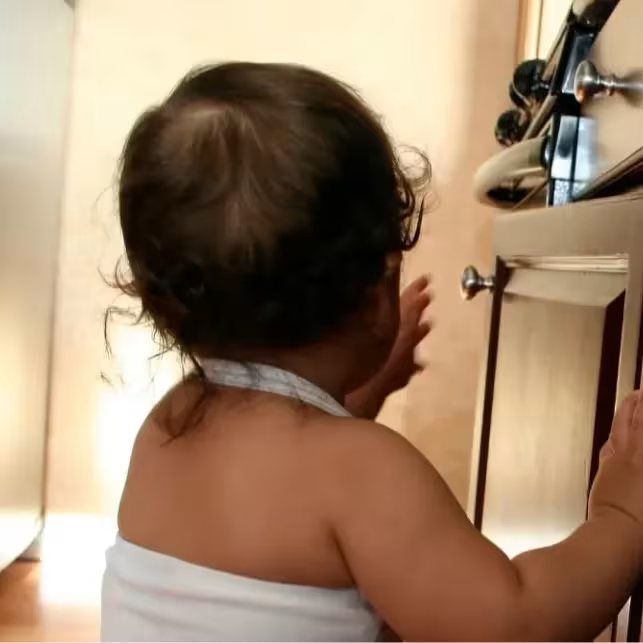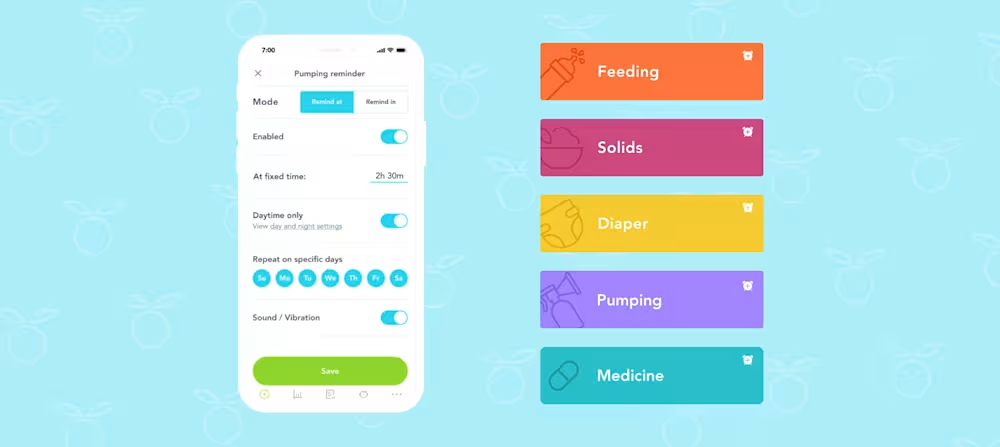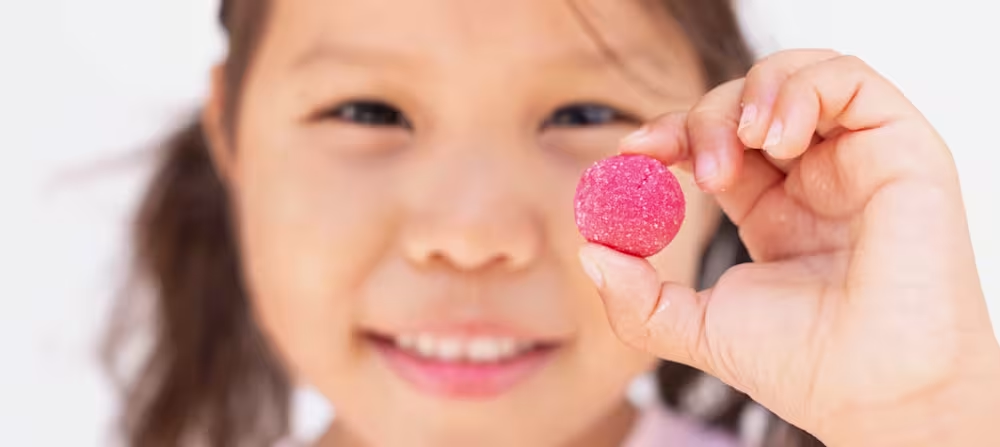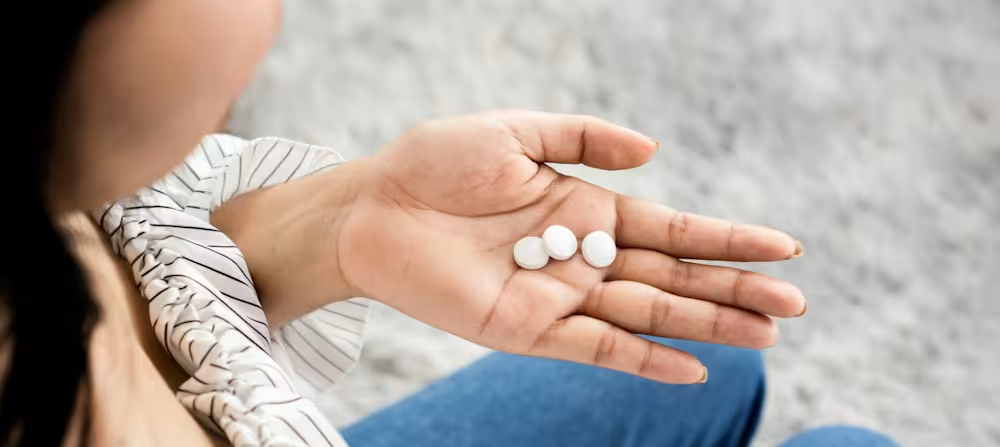The best way to get your kids to take medicine
Updated Oct 17, 2025

Little is more frustrating than a syringe full of antibiotics and a kid with their mouth sealed shut. Your baby or child desperately needs the medication, but no amount of begging and pleading will get them to release their lockjaw. Fortunately, with some patience and a few tricks up your sleeve, getting your child to take medicine doesn’t have to be a power struggle.
When parents use child-friendly medication methods by tapping into their patience, empathy, and creativity, everyone wins! Kids get the medicine they need to stay healthy, and parents get to avoid the stress and frustration of their kids refusing the meds (or spewing them!).
If your child’s medication needs to be given at particular times or certain intervals, be sure to use our updated . You can set convenient reminders for medicine - and more!
Choose the right form of medication for your child
Medications come in various forms and are suitable for different age groups. Sometimes the medication will only be available in one form. But often, parents can choose how to administer it, so selecting an age-appropriate form for your child is key.
For toddlers and children, you’ll also want to consider their temperament, which is how your child interacts with others and the world around them. For example, if they are slower to adapt and reactive (i.e., they have big feelings and reactions), they will require more preparation and patience than the super easy-going kid next door.
Common modes of medication administration for kids are:
Liquid medication that is swallowed
Liquid medication is appropriate for babies, toddlers, and any child who refuses to swallow a pill or who is unable to. Babies may do best drinking the medicine from a pacifier-shaped dispenser. For young children, an oral syringe dispenser can be used to release the liquid toward the side of the mouth, by the inside of the cheek, so it doesn’t come right back out. Older kids may drink out of a small measuring cup or spoon.
Pills that are swallowed
An observational study [] found that 91% of children aged 6 - 11 years were able to swallow a small oral tablet, and some kids may be able to swallow a pill even younger. Another study [] found that most children between 4 - 12 years old could swallow an 8-mm tablet. If your child is at least 4 years old and in a stage where they are eager to learn new skills, you may have luck with pills!
Chewable or dissolvable tablets
Chewables are a good alternative for kids ages 2 and older who aren’t yet able to swallow a pill. Chewable tablets are not recommended [] for children younger than 2 due to the choking hazard.
Communicate clearly and calmly
Talk to your child clearly, kindly, and calmly about why they need to take the medicine and how it will help them feel better. Use simple, age-appropriate language to explain why they need the medicine. Remember that they pick up on your anxiety, which in turn can make them feel less confident or hesitant to try. So keep your tone upbeat and friendly, and avoid saying things like “You have to take this medicine!” because that may be an invitation into a power struggle.
If your child isn’t successful in swallowing the medicine, still praise them for trying. This will help to avoid negative associations with medicine. Acknowledge their feelings and offer empathy for how it tastes yucky, but also highlight all the fun things they’ll be able to do when they take all the medicine and feel well.
Be sure to explain the importance of following the doctor's instructions and taking the correct dose as well.
Make it taste better; use fun tools and accessories
Kids do best when they are relaxed and having fun. Medicine administration strategies that bring playful tools and accessories into the mix can promote compliance.
Play pretend
Your kiddo can pretend to be the doctor, and you (or a teddy bear) can be the patient and “take” the medicine first. Or your child can be a lion who needs to crawl around and roar. Opening the mouth wide in a “roar” position is great for receiving liquid medication.
If possible, let kids see you take one of your own medicine pills or a multivitamin before it's their turn.
Yum the yuck
If the medication is in liquid form, you can ask the pharmacist to add flavor to the medicine to sweeten it and mask the taste. But for some kiddos, the yuck outweighs the yum, even with the additional flavor. You can also try mixing it with chocolate syrup, a small amount of juice, or applesauce. If they have a pill to swallow or chew, offering a spoonful or morsel of something before or after can sweeten the experience.
Make it novel and fun
Fun accessories like novelty straws, medicine dispensers designed for babies and small children, and colorful or character-inspired cups can help with kids' medication adherence. They only get to use these particular cups or straws for their medicine. If you act like a goofball while delivering it, that tends to help too!
Positive reinforcement in the form of small rewards or treats can add a little extra oomph as well. For children 3 years and older who really struggle with medicine, consider pairing a prize with a sticker chart if you need your kiddo to take a course of prescribed antibiotics.
A sticker can be added to a piece of paper for each dose of medicine taken, and a reward can be given after the medicine has been finished. (Remember that rewards can come in many forms and can include a special trip to the library or a cuddly movie night at home.) This can help your child visualize the number of doses needed and incentivize them to cooperate with the medication in order to receive the reward.
Offer choices and control
Power struggles over medication are common (e.g., “No, I will not open my mouth!”) and often lead to children’s medication resistance. Giving your child a sense of control and mastery, on the other hand, can help with compliance. You can create choices for them even in choiceless situations, like giving them prescribed medication.
For example, allow them to choose when to take their medicine (within the prescribed time frame), where they are going to sit to take it, and/or which stuffed animal or toy is going to be the helper!
You can also present options for taking medicine with or without a favorite food or beverage. If the options are medicine + chocolate syrup or medication without chocolate syrup, there’s a clear winner!
You might even be able to elicit their help in preparing the medication, which tends to go a long way toward compliance because it helps them feel competent and empowered. For example, they could go get it from the refrigerator (if that’s where it’s supposed to be stored), help you measure it, etc. While you’re doing this, you can mention other skills they’ve mastered that keep them healthy, like brushing their own teeth or washing their hands properly.
Don’t rush
Having patience is key when it comes to giving medication and pretty much all things parenting. If you push, rush, or get gruff, your kid is going to hop into the corner and put on the boxing gloves. Take a few deep breaths before you head into medication administration mode, and be prepared to take your time. This is especially important with children who are slower to adapt to new things.
Babies need you to be patient and relaxed too! Our children are little sponges for our emotional state, so if you are feeling impatient or anxious about giving them the medicine, chances are they will tense up too.
Praise and positive reinforcement are key
Have you ever noticed your child’s face light up when you admire something they’ve done well? Specific praise helps our children feel confident and capable, and you can use it to help them take their meds too. You might praise them for sitting still, helping you get the medicine from the bathroom (or wherever it’s stored), or choosing the perfect place to sit. When they feel like they are doing a good job, they become intrinsically motivated to comply, since doing a good job feels so good!
Incentives can be powerful! While we don’t recommend bribery often or all the time, sometimes an extra TV show, a special scoop of ice cream, or a chance to play a favorite game with you (that perhaps you don’t like and tend to resist) can give that extra motivation to help your child comply. Most parents have at least one game or activity that their child loves but often resists. For many parents I know, myself included, that game is “playing pretend.” Offering to play pretend while, during, and after can be highly incentivizing for children.
You can create a reward system or sticker chart, as previously mentioned, or just offer a small prize each time they take the medicine.
Also, if you offer loads of TLC both before and after the medication, this will help them feel safe, loved, and appreciated, rather than bribed or cajoled. We want to build positive associations with the meds!
Takeaway
Getting your child to take medicine doesn’t have to be a power struggle. By approaching the situation with a calm and positive attitude, giving them a sense of control, and making it enjoyable (or at least not terrible!), they’ll get their meds, and you’ll keep your sanity.
Finding the right approach for your child is key and essential to their overall health and well-being. If they love playing imaginary games, you can incorporate that into the medication administration strategies. If they’re a sucker for chocolate syrup, lean into that as a motivator and masker of the yuck.
And most importantly, keep your positive perspective. Even if they aren’t successful the first time, keep your chin up and offer praise. They’ll get the hang of it so long as negative associations aren’t created.
Medication FAQ
Share article:
Note: The content on this site is for informational purposes only and should not replace medical advice from your doctor, pediatrician, or medical professional. If you have questions or concerns, you should contact a medical professional.







